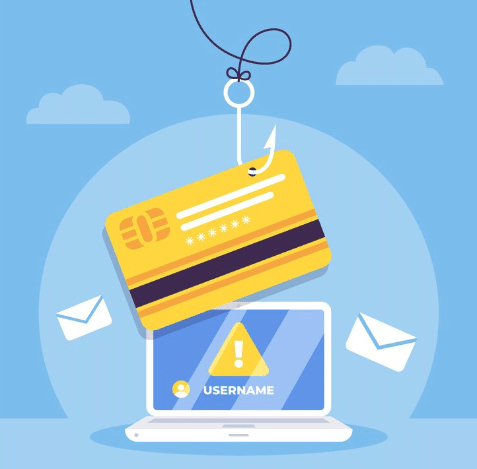The Anatomy of a Phish: A Guide to Recognizing and Avoiding E-Commerce Scams
In the expansive realm of online shopping, the threat of falling victim to e-commerce scams looms large. This comprehensive guide is your go-to resource for understanding the intricacies of these scams, empowering you to navigate the digital marketplace securely.
Seeking a WordPress Security Expert? We’re here to seamlessly fortify your business in the digital realm with specialized expertise. Elevate your online presence securely with us.
I. Introduction
A. Definition of phishing
Let’s start with the basics. Phishing involves the use of deceptive tactics to obtain sensitive information, such as usernames, passwords, and credit card details. While it takes various forms, phishing often manifests in the form of fraudulent emails, messages, or websites that mimic legitimate entities.

B. Growing threat in e-commerce
As the world embraces online shopping, e-commerce platforms have become prime targets for phishing attacks. The lure of financial information and personal data makes unsuspecting shoppers vulnerable to sophisticated scams. It’s crucial for consumers to be well-informed about the tactics employed by phishers to protect themselves effectively.
II. Understanding Phishing Attacks
A. Techniques employed by phishers
Phishers use a myriad of techniques to deceive individuals. From social engineering tactics to sophisticated email impersonation, understanding these methods is the first step in recognizing and avoiding potential threats.
B. Identifying Common Targets in E-Commerce
E-commerce platforms, with their vast user databases and financial transactions, are attractive targets for cybercriminals. Recognizing why and how these platforms are targeted is essential for consumers to stay vigilant.
C. Unveiling the Anatomy of an E-Commerce Scam Email
Examining the elements of a phishing email, such as the sender’s address, language used, and embedded links, provides valuable clues. Learning to identify these red flags is critical for online shoppers.
III. Recognizing E-Commerce Scams
A. Spoofed websites and URLs in e-commerce scams
Phishers often create counterfeit websites that closely mimic legitimate ones. Recognizing the signs of a spoofed website, such as subtle URL variations, is crucial for users to avoid falling into the trap.
B. Email and communication red flags
Phishing emails often contain subtle cues that betray their malicious intent. From generic greetings to urgent demands, understanding these red flags empowers users to distinguish between legitimate and fraudulent communications.
C. Spotting counterfeit payment pages in e-commerce scams
One common goal of e-commerce phishing is to capture sensitive payment information. Learning how to identify counterfeit payment pages ensures that users can make secure transactions.

IV. Real-Life Examples of E-Commerce Scams
A. Notable e-commerce phishing cases
Examining real-life instances of e-commerce phishing sheds light on the evolving tactics used by cybercriminals. These examples serve as cautionary tales, illustrating the importance of remaining vigilant.
B. Lessons learned from past incidents
Analyzing past incidents allows consumers to learn from the mistakes of others. Understanding how phishing attacks unfold and their consequences reinforces the need for proactive cybersecurity measures.
V. Protecting Yourself
A. Importance of cybersecurity awareness
Educating oneself about the ever-evolving landscape of cybersecurity is a fundamental defense against phishing. Regularly updating knowledge on the latest threats ensures users can adapt to new tactics.
B. Using secure payment methods
Opting for secure payment methods adds an extra layer of protection. Utilizing trusted services and avoiding sharing unnecessary information reduces the risk of falling victim to scams.
C. Employing two-factor authentication
Two-factor authentication (2FA) adds an additional security step beyond passwords. Implementing 2FA wherever possible enhances account security and deters unauthorized access.
VI. Reporting and Responding
A. Reporting phishing attempts
Reporting phishing attempts to relevant authorities and e-commerce platforms is a civic responsibility. Timely reporting can prevent others from falling victim to the same scams.
B. Immediate steps to take if targeted
In the unfortunate event of being targeted, users must take immediate action. Changing passwords, contacting financial institutions, and securing accounts are crucial steps to mitigate potential damage.
C. Involving authorities and e-commerce platforms
In cases of severe phishing attacks, involving law enforcement and e-commerce platforms can aid in taking legal action against perpetrators. Cooperation with relevant entities ensures a comprehensive response to cybercrime.
VII. Staying Informed
A. Keeping up with evolving phishing tactics
Staying one step ahead of cybercriminals requires continuous learning. Following cybersecurity blogs, attending webinars, and participating in online communities are excellent ways to stay informed.
B. Resources for staying informed
Numerous online resources provide up-to-date information on cybersecurity threats. From official cybersecurity agencies to reputable tech blogs, accessing these resources empowers users to navigate the digital landscape safely.
VIII. Conclusion
In conclusion, safeguarding oneself against e-commerce phishing scams requires a combination of awareness, education, and proactive measures. By understanding the techniques employed by phishers, recognizing red flags, and implementing robust security practices, online shoppers can significantly reduce the risk of falling victim to these malicious activities.



